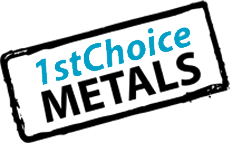What Is Aluminium Chequer Plate and What Is It Used For?
Often known as tread plate or checker plate, aluminium chequer plate is a robust metal sheet that features a distinctive raised pattern of bars. This textured finish is not merely aesthetic, but a practical solution for environments where slip resistance, durability, and ease of maintenance are essential.
Aluminium chequer plate is significantly lighter than many other construction materials, making it ideal for applications where weight is a concern. At the same time, it offers impressive strength and natural corrosion resistance, thanks to its protective oxide layer. This makes it particularly suitable for both indoor and outdoor environments.
Common applications include flooring in factories, walkways on industrial platforms, stair treads, ramps, and vehicle linings. Its slip-resistant properties make it a reliable surface in high-traffic and potentially wet areas. The material is also easy to cut and fabricate, making it versatile for bespoke installations. For those wondering what is chequer plate made from or what is chequer plate used for, aluminium stands out for its balance of strength, workability, and resistance to environmental damage.
Why Choose Aluminium Chequer Plate Over Other Materials?
When selecting materials for a project, aluminium chequer plate offers a clear advantage in several key areas.
Weight: Aluminium is far lighter than many other metal alternatives, which significantly reduces the load on structural elements and makes manual handling easier.
Corrosion Resistance: It naturally forms a thin oxide layer that protects against rust and corrosion, making it well suited to outdoor or damp environments. Our Aluminium Chequer Plate is supplied in Grade 5754, which is marine grade. Grade 5754 can withstand saltwater and is therefore often used on boats.
Cost Efficiency: While the initial cost of aluminium may be higher, its longevity and reduced maintenance often result in lower lifetime costs.
Ease of Fabrication: For those searching how to cut aluminium chequer plate or how to bend aluminium checker plate, the answer is straightforward: standard workshop tools can handle the job with ease.
5 Benefits of Using Aluminium Chequer Plate in Commercial Settings
Slip Resistance – The raised pattern improves grip underfoot. So, yes, chequer plate is non slip, helping businesses meet workplace safety standards.
Strength Without the Weight – Its low weight paired with high tensile strength allows it to support substantial loads without adding unnecessary bulk.
Corrosion Resistance – The rust-proof quality makes it ideal in wet, industrial, or chemically exposed environments.
Ease of Cleaning – Most dirt and grime can be removed with simple soap and water. Those asking how to clean aluminium chequer plate will find it a low-maintenance option.
Visual Appeal – The clean, modern finish adds a professional look to commercial and industrial spaces.
How to Clean and Maintain Your Aluminium Chequer Plate
Routine Cleaning: Use warm water and mild soap with a soft cloth or sponge. Avoid abrasive pads, as they can dull the raised pattern.
Stain Removal: For tougher marks or oxidation, an aluminium-specific cleaner or diluted vinegar works well. Rub gently with a non-scratch sponge to avoid surface damage. If you’ve searched how to clean aluminium checker plate or how to clean aluminium checquer plate, these are the best methods.
Polishing: To bring back a bright finish, use an aluminium polish with a microfibre cloth.
Surface Protection: Avoid leaving acidic or alkaline substances on the plate for extended periods to prevent damage.
For those needing bespoke sizes or shapes, 1st Choice Metals provides pre-cut aluminium chequer plate and offers advice on how to cut chequer plate safely and accurately. If you’re wondering where to buy aluminium checker plate, visit our aluminium chequer plate product page for full details.
